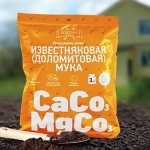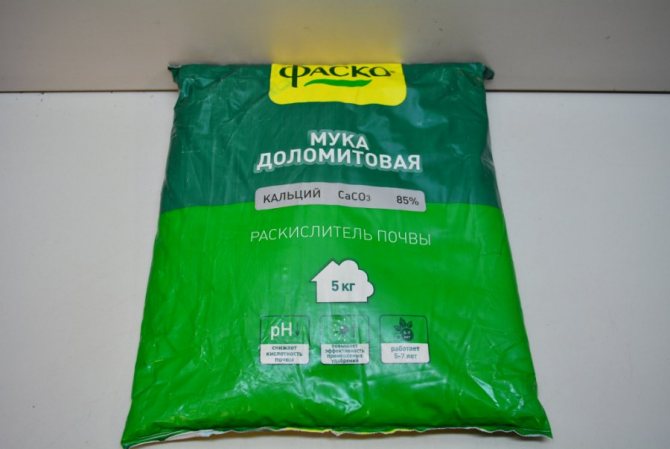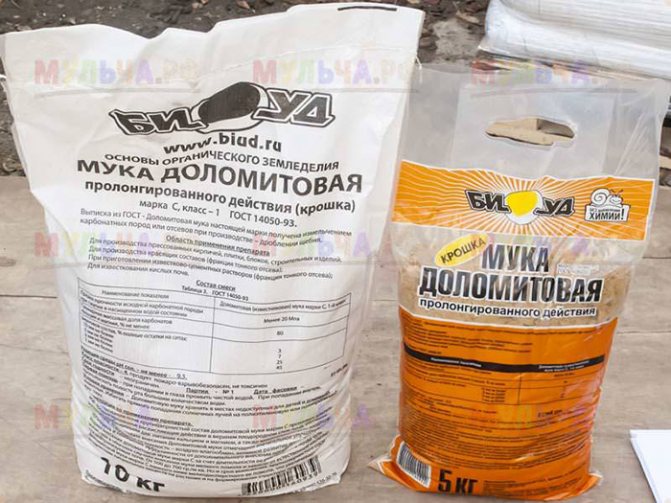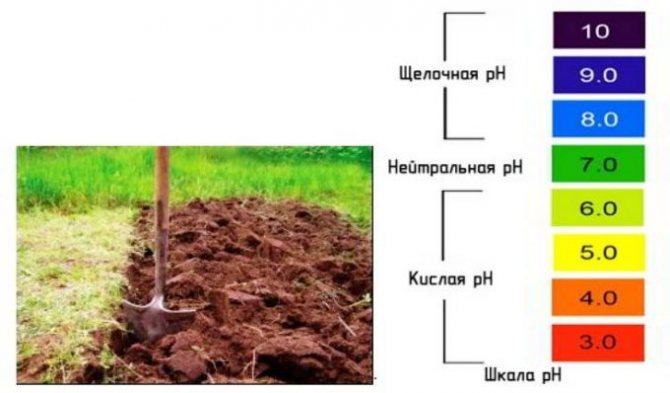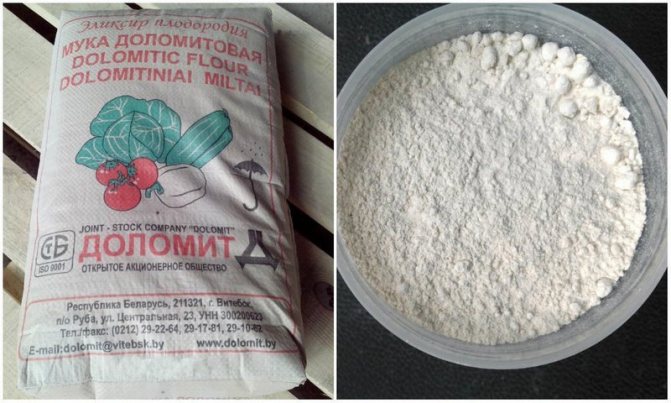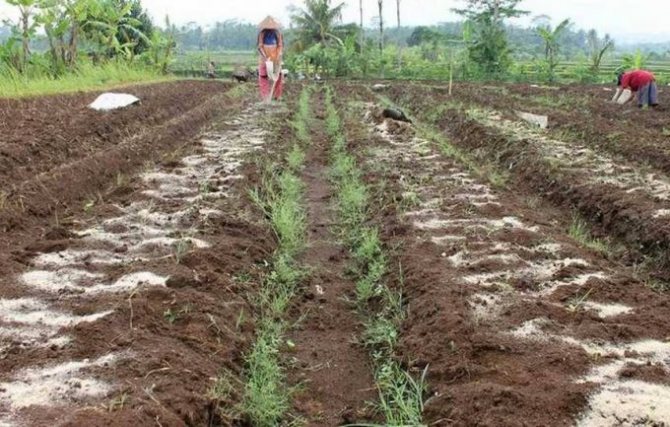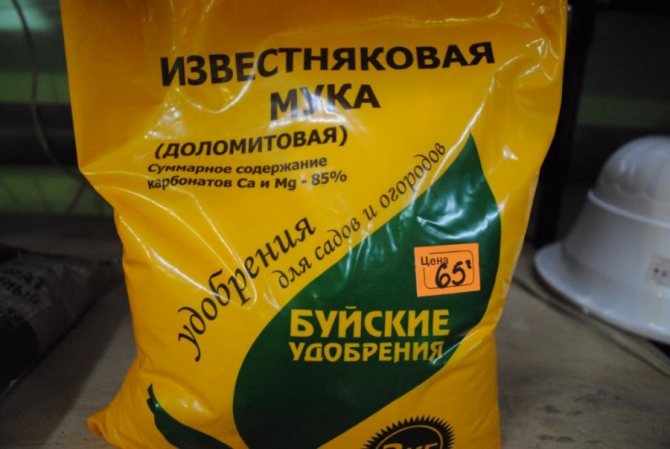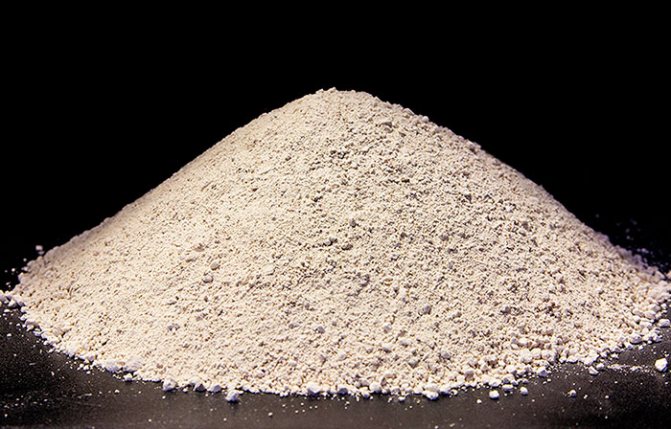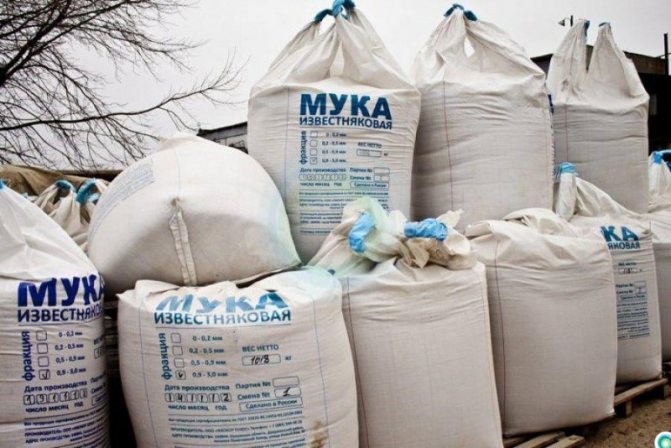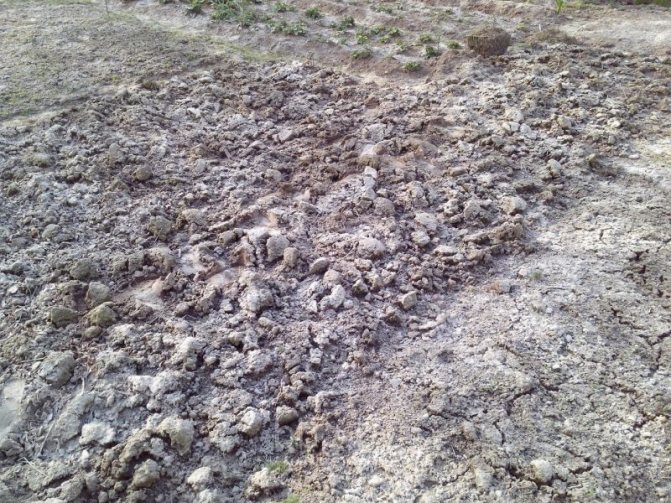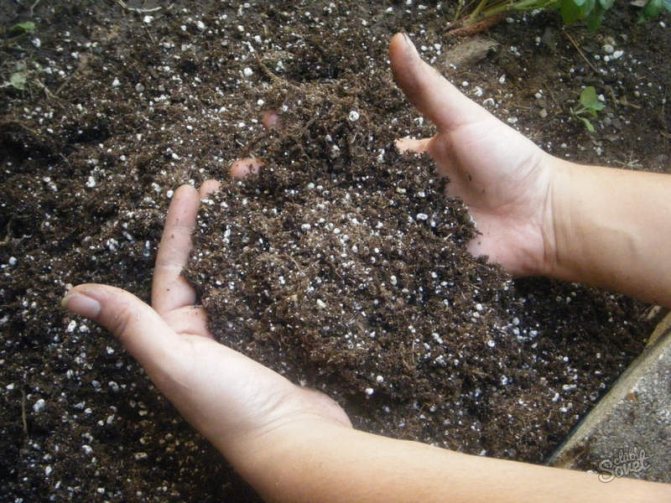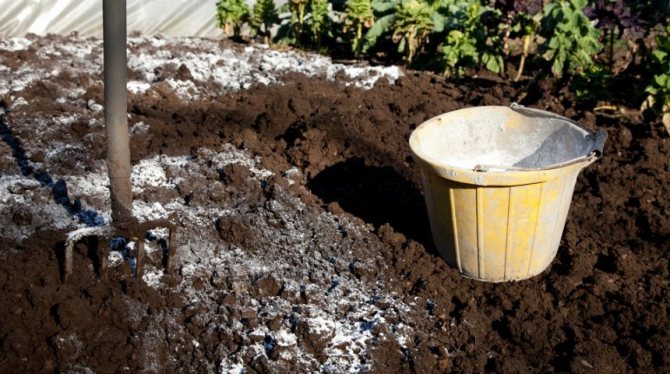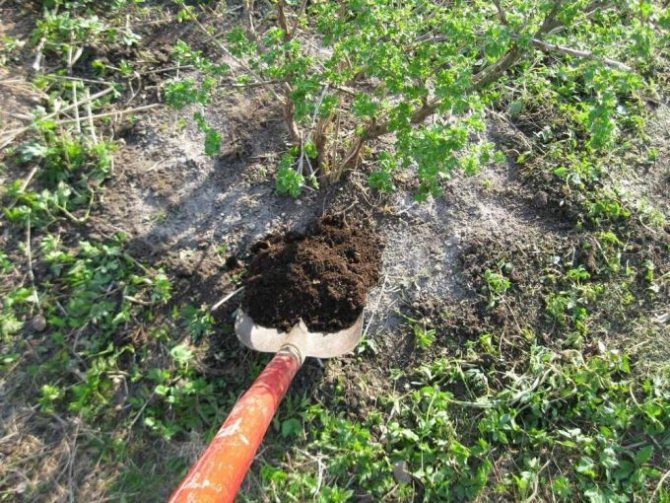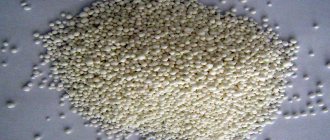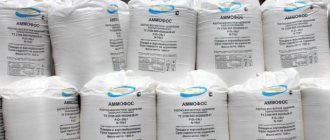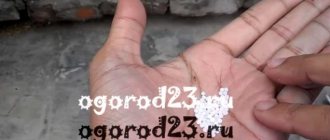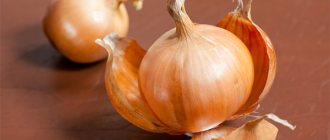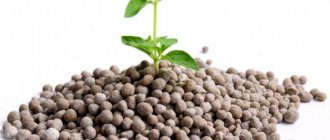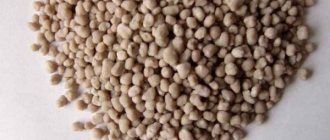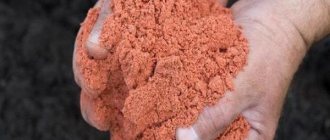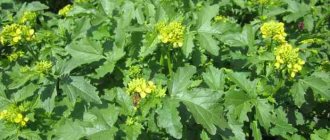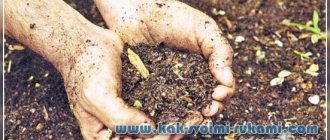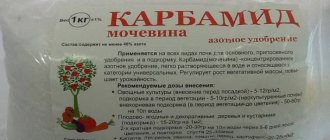So, it is obvious that you are interested in such a useful organic fertilizer and a very effective soil deoxidizer like dolomite flour (they also say "dolomite").
What is dolomite flour, what is it used for, when and how it is introduced into the soil, this material will be devoted to the answers to these and other questions of using dolomite in the garden and vegetable garden.
Dolomite flour composition
Fertilizer dolomite is a mineral crushed to a powdery state called dolomite (CaMg (CO2)) and belongs to natural carbonates. It is characterized by a fine fraction similar to flour. Carbonate powder can be white, gray, brownish. It is rich in calcium, magnesium.
Dolomite flour can be called a natural, environmentally friendly fertilizer that is safe for plants and humans. Its use provides a decrease in the acidity of the soil, its enrichment with useful elements that are necessary for garden and horticultural crops for normal growth and development. The agent has a gentle effect on the soil, unlike slaked lime or ash.
Instructions for use
Despite its rich chemical composition and useful properties, using dolomite flour without preparatory procedures, accurate calculations of the dosage and acidity of the soil is dangerous for plants and the soil itself.
First step - determination of the pH level (acidity) on the land.
How to determine the acidity of the soil
What is soil acidity? Why are its parameters so important for growing plants?
Most cultures prefer the acidity (pH) range to be within 4.5-8, where 4.5 is an acidic substrate, 8 is an alkaline substrate.
If the parameters shift towards an increase or decrease in the acid-base balance, then minerals, salts, beneficial bacteria will be inaccessible to plants, the root system will not be able to absorb them.
For example, if nitrogen is not available, plant growth will stop, with a lack of magnesium and iron, chlorosis of the leaves appears.
Some plants require acidic and slightly acidic soil, such as strawberries, blueberries, blueberries and all types of conifers. Vegetables - tomatoes, cucumbers, carrots prefer neutral soil. To achieve good yields, you need to know exactly the acidity of the soil.
There are many methods for studying the acidic environment - laboratory, using electronic devices and "household", which are easy to implement at home.
Let's consider the best options.
Weeds - indicators of the acidity of the substrate
Gardeners are most often guided by wild plants that grow on the site.
Only grow on acidic soil mixture:
- oxalis;
- plantains;
- wild sorrel;
- creeping buttercups;
- field horsetail;
- ivan da marya.
Useful properties for plants
Carbonate powder is widely used in horticulture and horticulture. The use of dolomite is justified in order to enrich the planting with the elements necessary for plants, to fight parasites and diseases. Flour is rich in calcium and magnesium, elements necessary for good root growth, for the normal course of processes associated with photosynthesis.
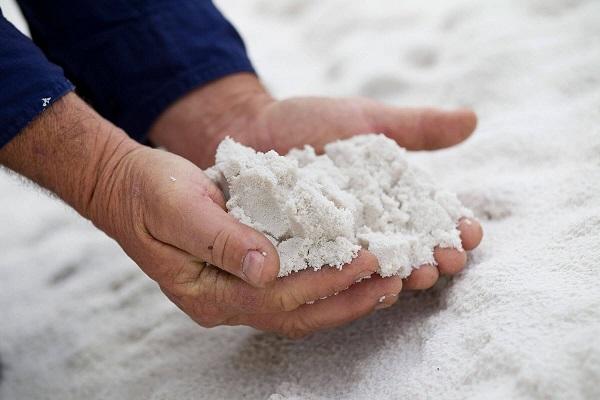
Lime powdery substance is used when growing:
- vegetables such as tomatoes, peppers, cabbage, eggplants, potatoes, cucumbers;
- salad greens, beans, barley;
- winter garlic and onions;
- stone fruit trees;
- berry crops.
The use of carbonate flour makes sense when growing potatoes in acidic and moderately acidic soil conditions. The tool will reduce the risk of planting damage by scab, Colorado potato beetle, and increase the starchiness of tubers. It is introduced when plowing the soil.
Experienced gardeners recommend the use of lime flour as an autumn feeding of strawberries. On its basis, a feeding mix is prepared by mixing (per 1 m2 of planting):
- dolomite (2 glasses);
- ash (1 glass);
- nitrophosphate (2 tablespoons).
Crushed dolomite is "fed" in the autumn and the garden (no more than 1 time in 3 years, if the soil is acidic; 1 time in 7 years, if the soil is slightly acidic). Top dressing is suitable for cherries, plums. Up to 2 kg of powdery mass is added under the tree.
Fertilizing carbonate flour is evenly scattered over the soil surface, then poured (depth - 10 cm).
The use of dolomite allows you to achieve the following effects:
- overgrowth of roots;
- improving the quality of land;
- better reproduction of beneficial microorganisms in the garden soil;
- neutralization of toxins present in the soil;
- saturation of growing crops with the useful elements they need (in combination with other nourishing mineral compositions);
- increasing the rate of the metabolic process during photosynthesis;
- improving the quality of the crop;
- solutions to the problem of insect pests and diseases.
What are they used for?
Newbie gardeners are interested in what dolomite flour is for. It helps to solve several problems at once. Usually, the remedy is remembered when there is a need to reduce the acidity of the soil. This indicator is considered one of the important characteristics of the soil.
Most crops do not fully develop, growing on acidified soil. For the development of garden plants, a neutral soil is usually required (slightly acidic is allowed). The addition of a calcium-magnesium substance helps to achieve optimal performance.
The use of dolomite flour helps the correct growth of crops, therefore it is widely used in horticulture. After application, the agent maintains the optimal amount of Ca and H ions. Dolomite flour has found application in agriculture largely due to this important property. After such feeding, the trees increase the green mass, the fruits form and ripen faster. The use of dolomite flour is appropriate everywhere: in the garden, dacha, garden plot.
Soil deacidification
The use of dolomite flour in a garden, summer cottage or garden plot has a beneficial effect on the soil. As a result of the action of the agent, its acidity decreases. After the procedure, fertilizers applied after dolomite work more efficiently. Another plus of use is a prolonged effect.
Flour is used to deoxidize sandy and sandy loam soils. The main problem with these types of soil is the lack of magnesium. When powder is added to the ground, the deficiency of an important macronutrient is replenished. When choosing a product, it is better to use a finely ground top dressing.
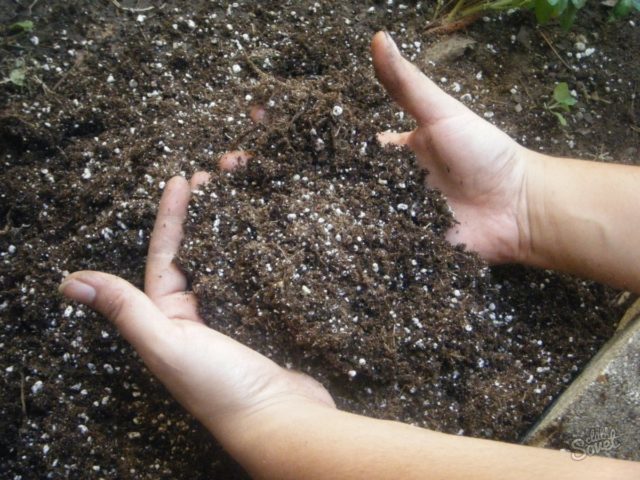

The use of dolomite flour has a beneficial effect on the soil
It is recommended to process the soil on which slow-growing crops will be planted:
- trees; fruit bushes;
- onion;
- potatoes.
It is necessary to choose the correct dosage of the substance. Soil deoxidation with dolomite flour is possible at any time, even in spring. You just need to remember about dressings that are incompatible with this powder.
Insect control use
Dolomite is used to kill some pests. The substance negatively affects the chitinous shells of adults. Therefore, they do not multiply in flour deoxidized soil. The product is toxic to some insects (ticks, beetles, flies, butterflies).
For which crops and soils is it suitable?
It is recommended to introduce a lime powdery mass by experienced gardeners and gardeners when growing almost any agricultural crop. Dolomite flour is suitable for: berries, vegetables, fruit trees and shrubs, cereals (we are talking about flax, buckwheat, clover), herbaceous plants, flowers.
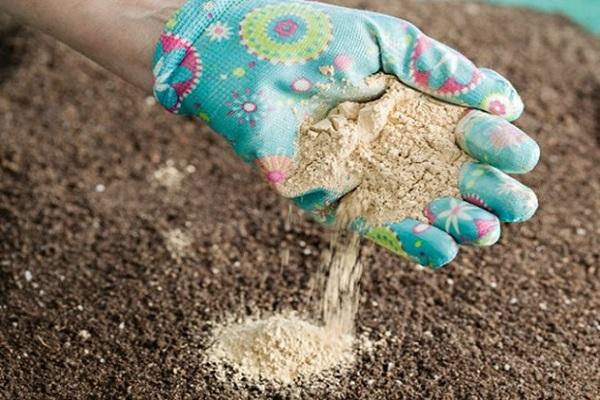

Plants grown in conditions of acidic soils, sandstones, sandy stones, soil poor in magnesium are especially in need of a remedy. Dolomite is applicable for greenhouse plantings and indoor plants in pots.
Application rules
Dolomite powder is one of the safest supplements used in the home farm. However, working with it requires caution and adherence to the rules of introduction.
Abuse of the product negatively affects the harvest.
The addition of lime flour is permissible throughout the year. First, you should determine the acidity indicator of the garden soil.
The indicators of the consumption rate of carbonate crushed into powder are as follows:
- if the soil is acidic (pH ≤ 4.5), take 50 kg of the product per 1 are;
- if the soil is moderately acidic (from 4.5 to 5.2), 45 kg are consumed per 1 are;
- if the soil is slightly acidic (from 5.2 to 5.7), the consumption rate is 35-40 kg per 1 are.
It is also required to take into account the peculiarities of the structure of the soil. For light soil, the consumption is reduced by 1.5 times, for heavy soil, as well as loam, alumina, it is increased by 15%.
Liming time
The use of crushed carbonate is possible both in spring and autumn (the latter is more preferable). It is permissible to add dolomite in the summer, if there is a need for it.
- Experienced gardeners prefer autumn application. In this case, the earth, fed with lime flour, is harmonized in chemical composition before the onset of the spring months.
- It is advisable to resort to liming before using other feeding compounds. Dolomite does not interact organically with every fertilizer applied.
- In the spring (April, May), flour is applied 2-3 weeks before planting crops. It will saturate the garden soil with useful elements, improve its structure, and disinfect it.
- The use of dolomite after harvest (from the last days of August to the second half of October) is preferable for the garden. It is scattered around each fruit tree, then the soil is loosened.
- You can resort to applying the product at the end of winter (from February to the second half of March), sprinkling the powdery mass on the snow. As the snow melts, the feed is absorbed into the soil. The technique is applicable on a flat area, which is covered with a loose snow cover, up to 25 cm thick. The area must be protected from the wind. Otherwise, the lime flour will be blown away before the snow begins to melt.
- Dolomite can be used during the entire growing season in the summer as a top dressing, insecticide. It is important to comply with the consumption rates of the product. They do not resort to planting processing more often than once every 5-6 weeks.
Compatibility with other fertilizers
Carbonate flour is not compatible with all fertilizers.
Dolomite compatibility table with different make-ups
| Fertilizer name | Is dolomite compatible |
| Slurry | Do not add to the soil at the same time. First, flour is added, after a couple of days, an organic substance. The amount of manure should be reduced by 2 times. |
| Urea (urea) | Not compatible |
| Ammonium nitrate | Not compatible |
| Copper sulfate | Excellent compatibility |
| Boric acid | Good compatibility |
| Superphosphate | Not |
| Ammonium sulfate | Not |
| Nitrophoska | Not |
| Azofoska | Not |
Top dressing that is incompatible with crushed dolomite should be used no earlier than 10 days after fertilizing with flour.
Dolomite flour substitutes
Limestone is not the only drug that can be used to deoxidize soil.It can be replaced with:
- Wood ash. When applying, take into account the type of wood from which it is ash. Calculation of the substance consumption is complex. Such fertilizer is more expensive than dolomite.
- Lime (fluff). This is an active substance that quickly neutralizes the acidity of the soil, prevents plants from fully absorbing phosphorus with nitrogen. It should not be poured onto the stems, as it burns the foliage. Exceeding the norm harms the roots
- With ground chalk. It works slower than lime. It contains 10% magnesium carbonate. It is used dry in spring and as a hydrate for summer irrigation. Its consumption is 30% higher than dolomite. Over time, the soil becomes saline.
Dolomite flour contributes to an ecologically clean, tasty and rich harvest. This is an economical option for soil fertilization, which saturates the soil with beneficial trace elements. Does not harm plants.
Usefulness of the remedy
What is dolomite flour for? The fertilizer is recommended to be used to saturate plant roots with useful substances. It improves the quality of the soil. When, after the treatment, the gardener introduces other fertilizing, the nutrients from them are better absorbed by the crops. With the help of the powder, the photosynthesis of the plant is accelerated.
In addition, the taste of the fruit is improved, and the harvested crop is stored longer. Plant roots become stronger. Dolomite flour can be used as an insect killer. It breaks down their chitinous layer of their shells, acting like an abrasive. Despite this, the fertilizer is environmentally friendly and practically does not harm the land and plantings. Before entering, its site must be prepared additionally.
After adding flour, the soil is saturated with minerals, for example, nitrogen, potassium, etc. In this form, the substances are well absorbed by plantings. Magnesium in the top dressing enhances photosynthesis. Top dressing neutralizes radionuclides. Even after processing, the harvested fruits and roots remain environmentally friendly and are stored for a long time. The powder is capable of destroying weeds and harmful insects.
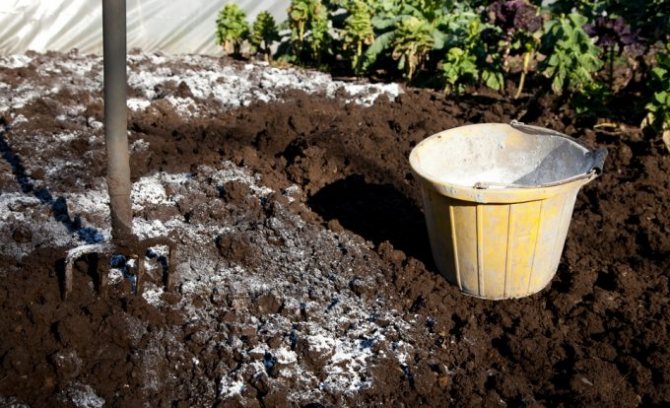

Pros and cons
Fertilizer is environmentally friendly, has a positive effect on the structure of the soil. It reduces acidity, helps to get high yields. It is used throughout the growing season. The only drawback of top dressing is the cumulative effect. The remedy does not help instantly. Top dressing is an almost ideal fertilizer. There are no negative effects when soil is enriched.
Popular: Branched ampelous Epipremnum from the Aroid family

